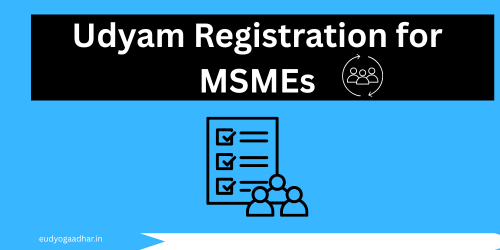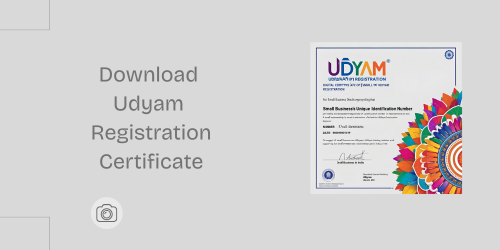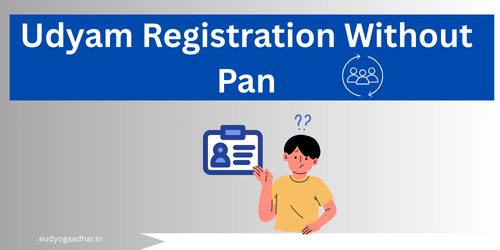Udyam Registration for MSMEs
Udyam Registration for MSMEs is the new process of registering micro, small, and medium enterprises (MSMEs) in India, introduced by the Ministry of Micro, Small & Medium Enterprises (MSME) in July 2020. It replaced the earlier system of registration known as Udyog Aadhaar Memorandum (UAM). Under the Udyam Registration process, MSMEs can register online through the Udyam Registration Portal . The registration process is simple and requires basic information about the enterprise, such as Aadhaar number, PAN number, name of the enterprise, type of organisation, location, and details of business activities. Once registered, the MSME receives a unique Udyam Registration Number and an e-certificate, which provides various benefits and privileges offered by the government to MSMEs, such as easy access to credit, subsidies, incentives, and other support schemes. Udyam Registration is aimed at promoting ease of doing business for MSMEs and facilitating their growth and development in India. It is mandatory for MSMEs to register under Udyam to avail of the benefits provided by the government. Udyam Registration for MSMEs Manufacturing enterprises – Manufacturing enterprises are businesses involved in the production of goods through the transformation of raw materials or components into finished products. These enterprises typically operate in sectors such as automotive, electronics, food and beverage, textiles, chemicals, pharmaceuticals, machinery, and many others. In the context of MSMEs (Micro, Small, and Medium Enterprises), manufacturing enterprises play a crucial role in driving economic growth, employment generation, and industrial development in a country. They often have a significant impact on the economy due to their contribution to GDP, exports, and technological innovation. Manufacturing MSMEs face various challenges, including access to finance, technology adoption, infrastructure constraints, market competition, regulatory compliance, and skilled labor availability. However, they also have opportunities for growth and expansion through government support schemes, innovation, diversification, and international trade. Udyam Registration for MSMEs Service Sector- The service sector refers to a segment of the economy that provides intangible goods or services rather than tangible products. It encompasses a wide range of industries including hospitality, healthcare, finance, education, transportation, telecommunications, entertainment, and more. Essentially, any business activity that involves offering expertise, time, or effort to satisfy the needs of customers falls within the service sector. One of the defining characteristics of the service sector is its reliance on human capital, as services are often delivered by people rather than manufactured goods. This sector is often associated with activities such as customer service, consulting, and entertainment, where the quality of interaction and experience is paramount. The service sector plays a significant role in modern economies, often serving as a major driver of economic growth and employment. It tends to be more resilient to economic downturns compared to the manufacturing sector, as services are often essential for daily life and less susceptible to outsourcing or automation. Udyam Registration for MSMEs Benefits of Udyam Registration for MSMEs Udyam Registration, formerly known as MSME registration in India, offers several benefits to Micro, Small, and Medium Enterprises (MSMEs). Here are some of the key advantages:
Udyam Registration for MSMEs Read More »










